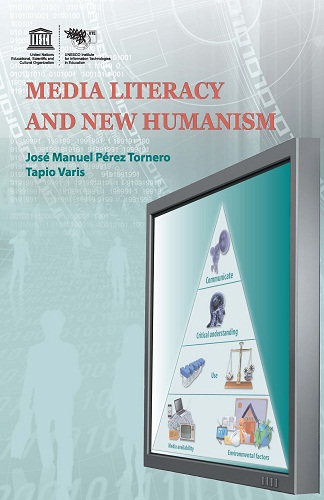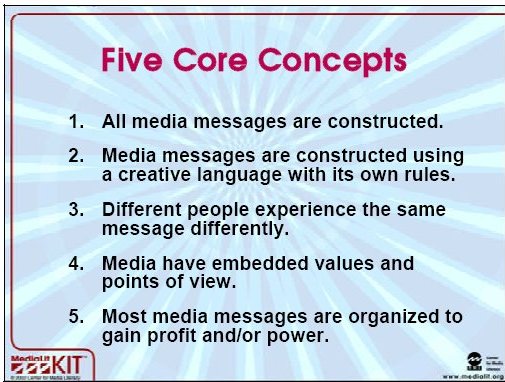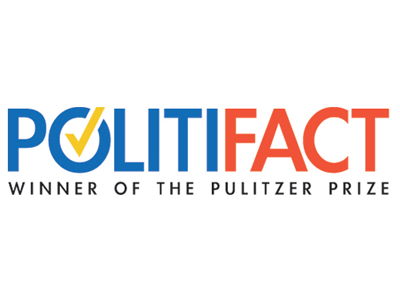Advanced Media Literacy Course
| Topic | Name | Description |
|---|---|---|
| Old and New Media, Media Literacy & New Humanism | A short opening lecture entitled What is media literacy? explaining the notion of media literacy. Prezi presentation of the lecture can be found here. |
|
Reading - Paris 2007 Declaration on Media EducationUNESCO takes Media literacy seriously! Already in 1982, UNESCO made a so-called Grunewald Declaration, stating: ‘We live in a world where media are omnipresent: an increasing number of people spend a great deal of time watching television, reading newspapers and magazines, playing records and listening to the radio. In some countries, for example, children already spend more time watching television than they do attending school.’ ‘Rather than condemn or endorse the undoubted power of the media, we need to accept their significant impact and penetration throughout the world as an established fact, and also appreciate their importance as an element of culture in today’s world. The role of communication and media in the process of development should not be underestimated, nor the function of media as instruments for the citizen’s active participation in society. Political and educational systems need to recognize their obligations to promote in their citizens a critical understanding of the phenomena of communication.’ In 2007, UNESCO made another declaration in Paris, which you can read above or here. |
||
| Find a Villain – How to analyse and critically read media messages? | Critically reading media messages means to be aware, to think, and to think critically, about this angle that the story is being told. We will illustrate this point by looking at several different media footage of the Syrian crisis. Prezi presentation of the lecture can be found here. |
|
The goal of this exercise (accommodated from MediaLit.org) is to gain a better understanding of how media messages are constructed. The decision of what to include and what to leave out is made all the time as media creators struggle to balance competing needs. By enacting the role of news producers and organizing a simple 30 minute TV newscast, you can experience the process of making critical choices about what gets aired and what is never seen. Objectives: You will be able to… 1. Experience the role of news editor. 2. Define factors that go into news judgments. 3. Explore the constructed nature of news media with a consciousness of the way subjective choices influence the news that gets reported. Your Task(s): I. First, go to this website of the Newseum, containing front pages from over 400 newspapers in 47 countries; the “map view” helps you locate your own local newspaper as well as cities near and far. II. Compare various Newspapers' front pages - Which stories are on more front pages? Which are only on one front page? What feelings or impressions do you get from the different front pages? Compare headlines for the same story in the two papers. How do the headlines differ in tone and implication? How do the headlines influence the way one could read the story? Compare photographs connected with the same story in the two newspapers. In what ways are the photos similar or different? What do the photos suggest about the story? What are some ways you see that headlines and photographs affect interpretations of news stories? III. Make your own front page. While doing it, try to think about - How and why do you decide to select certain events and exclude others? What photos/visuals do you include and why? What headlines and subheadings you chose - can they be really neutral and what kind of message do they transmit?
|
||
| 5W+1H – The Essence of (Responsible) Journalism | Lecture 5W+1H Principle of Journalism introduces the basic things that we expect to see in any good media reporting. Its essence is summarized in the 5 Ws and 1H principle, meaning that your information should contain answers to the following 5 questions: Who, What, Why, When and Where, as well as How. Prezi presentation of the lecture can be found here.
|
|
Every story and every written text has a certain logic, they are all constructed according to certain principles. The aim of this short lecture Basic rules of writing (10:46),is to identify some basic writing logic or principles that (should) underline(s) all writing. Prezi presentation of the lecture can be found here.
|
||
This presentation summarizes the development of responsible journalism and provides examples of the most influential cases in the history of investigative journalism The Watergate scandal, WikiLeaks, Panama papers... |
||
This presentation contains some basic information about fake news and how to recognize them, as well as additional sources and links on the subject. In sort, "fake news” are those news stories that are false: the story itself is fabricated, with no verifiable facts, sources or quotes.Additional Sources:•Fact v. Fiction - Fake News: a useful website containing examples of fake news, fake news websites, quiz and online games for practicing identifying and recognizing fake news •Another index of fake news websites by Columbia Journalism Review (CJR) •A useful website about Identifying Fake News Sources •Stebbins, Leslie. (2015). Finding Reliable Information Online: Adventures of an Information Sleuth. Lanham, MD: Rowman & Littlefield, 2015 Stebbings offers an interesting book in which each chapter presents an example of one online search for information, from a question of is red wine good for health to where to go on a holiday. She follows search engines such as Google and specialized websites and searches for sources and roots of information to show which are good and reliable sources. Balkan websites and initiatives for exposing fake news: |
||
Real or fake? is a short, 10 question quiz developed by the Pulitzer-winning Politifact. These questions help you determine and evaluate if a certain website, article, or source of information is reliable or not. After you responded to the quiz, you will get a feedback telling you if the source in question is reliable, fake or dubious and needs further verification. |



